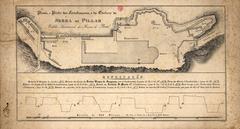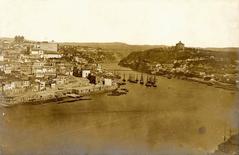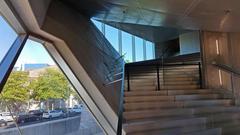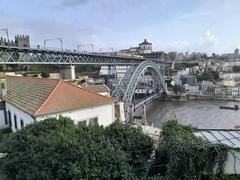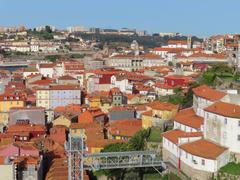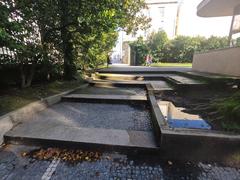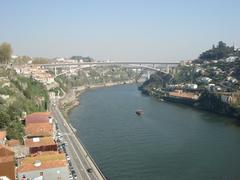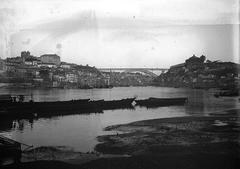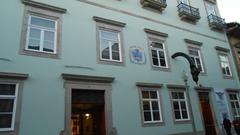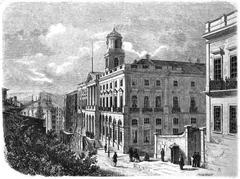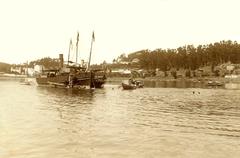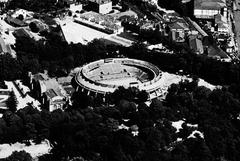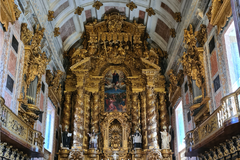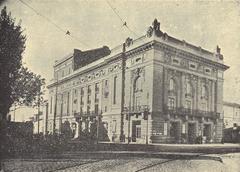
Comprehensive Guide to Visiting Monastery of Serra do Pilar, Porto, Portugal
Date: 16/08/2024
Introduction to Monastery of Serra do Pilar
The Monastery of Serra do Pilar, located in Vila Nova de Gaia just across the Douro River from Porto, Portugal, stands as a testament to the rich historical and architectural heritage of the region. This UNESCO World Heritage Site, completed in 1670, is renowned for its unique circular church and cloister, both of which are rare in Portuguese ecclesiastical architecture (Visit Portugal). Initially built to house the Augustinian Friars, the monastery’s strategic location has also lent it significant military importance throughout history. During the Peninsular War, it served as a launch site for General Arthur Wellesley’s successful surprise attack on the French, and it was the only Liberal stronghold on the south side of the Douro River during the Siege of Porto (Wikipedia).
Architecturally, the monastery showcases Renaissance and Mannerist styles, with its circular design inspired by the Church of Santa Maria Redonda in Rome. The interior features impressive artistic elements, including carved gold leaf altars and 18th-century polychrome wooden carvings (Mad About Porto). Visitors can explore these architectural marvels and also enjoy breathtaking panoramic views of Porto and the Douro River from the monastery’s terrace. The site is open to the public year-round, offering guided tours and special events that provide deeper insights into its historical and cultural significance.
Whether you’re a history enthusiast, architecture lover, or simply someone looking to capture stunning views of Porto, the Monastery of Serra do Pilar offers a multifaceted experience that is both educational and visually captivating.
Table of Contents
- [Historical Background](#historical-backgroundhistorical-background)
- [Early Construction and Architectural Design](#early-construction-and-architectural-designearly-construction-and-architectural-design)
- [Political and Military Significance](#political-and-military-significancepolitical-and-military-significance)
- [19th Century Fortifications and National Monument Status](#19th-century-fortifications-and-national-monument-status19th-century-fortifications-and-national-monument-status)
- [UNESCO World Heritage Site Designation](#unesco-world-heritage-site-designationunesco-world-heritage-site-designation)
- [Architectural Features](#architectural-featuresarchitectural-features)
- [Interior and Artistic Elements](#interior-and-artistic-elementsinterior-and-artistic-elements)
- [Visitor Information](#visitor-informationvisitor-information)
- [Visiting Hours and Ticket Prices](#visiting-hours-and-ticket-pricesvisiting-hours-and-ticket-prices)
- [Guided Tours and Special Events](#guided-tours-and-special-eventsguided-tours-and-special-events)
- [Panoramic Views and Visitor Experience](#panoramic-views-and-visitor-experiencepanoramic-views-and-visitor-experience)
- [Travel Tips and FAQs](#travel-tips-and-faqstravel-tips-and-faqs)
- [Travel Tips](#travel-tipstravel-tips)
- [FAQs](#faqsfaqs)
- [Conclusion](#conclusionconclusion)
- [References](#referencesreferences)
Historical Background
Early Construction and Architectural Design
The Monastery of Serra do Pilar, located in Vila Nova de Gaia, Portugal, began its construction in 1538 and was completed in 1670. Initially built to house the Augustinian Friars from the Monastery of Grijó, the monastery features a unique architectural design with a circular church and cloister. This design, rare in Portugal, replicates the Church of Santa Maria Redonda in Rome, and is covered by a hemispheric vault with a narrow balcony running its full extent (Visit Portugal).
Political and Military Significance
The monastery’s strategic location on a hill overlooking the Douro River and the city of Porto made it a significant military site. During the Peninsular War, General Arthur Wellesley used the monastery to launch a surprise attack on the French across the Douro River, successfully retaking Porto (Wikipedia). Its military importance continued during the Siege of Porto, serving as the only Liberal stronghold on the south side of the Douro River.
19th Century Fortifications and National Monument Status
Throughout the 19th century, the monastery was fortified to leverage its strategic location. In 1832, during the Siege of Oporto, it was quickly converted into an improvised fort. The site was declared a National Monument of Portugal in 1910 (Wikipedia). Reconstruction began in 1927 to restore portions destroyed by wars, and by 1947, parts of the monastery were converted into military barracks, which remain on the site today (Visit Portugal).
UNESCO World Heritage Site Designation
In 1996, the Monastery of Serra do Pilar, along with the historic center of Porto and the Dom Luís I Bridge, was designated a UNESCO World Heritage Site, highlighting its architectural and historical significance (Spotting History).
Architectural Features
The Monastery of Serra do Pilar is notable for its Renaissance and Mannerist architectural elements. Both the church and cloister are circular with identical diameters, a unique design in Portugal. The church, located in the west, and the cloister, in the east, are separated by a rectangular choir and chapel. The north wing houses the bell tower and dormitories, while the south wing contains the sacristy and refectory (Wikipedia).
Interior and Artistic Elements
The interior of the church features impressive carved gold leaf altars with Solomonic columns, along with 18th-century polychrome wooden carvings of saints Eulalia, Apollonia, and Augustine. The main altar is adorned with gilded decorations and religious sculptures (Mad About Porto). The cloister, lined with 36 Ionic columns, currently houses North Heritage and includes a statue of D. Afonso Henriques by Soares dos Reis (Spotting History).
Visitor Information
Visiting Hours and Ticket Prices
The Monastery of Serra do Pilar is open to the public, with the church holding Sunday Mass supported by wealthy local families who open it for guided visits (Julie Dawn Fox). The monastery is closed on Mondays and open from 9:30 am to 5:30 pm or 6:30 pm from April to October. It is temporarily closed for renovations as of March 2024, but visitors can still enjoy the terrace views (Julie Dawn Fox). Tickets are required for certain areas and guided tours.
Guided Tours and Special Events
Guided tours include a climb to the dome, a 100-step ascent offering spectacular views over Porto (Spotting History). The monastery still functions as a military barracks for the Serra da Pilar Artillery Regiment, with visitors escorted by staff through a stone hallway and up a tight spiral staircase to the dome’s circular terrace (Julie Dawn Fox).
Panoramic Views and Visitor Experience
One of the highlights of visiting the Monastery of Serra do Pilar is the panoramic view from its terrace. The 360º view encompasses the city of Porto, the Douro River, and the iconic Dom Luís I Bridge. The view extends out towards the sea, across the red rooftops of Vila Nova de Gaia’s port wine lodges, and past a succession of bridges (Julie Dawn Fox). Visitors can also view tanks and cannons displayed within the barracks and beyond the dormitories to more bridges and the edges of Porto and Gaia.
Travel Tips and FAQs
Travel Tips
- Best Time to Visit: April to October for extended visiting hours.
- Accessibility: Check for guided tours especially if you require assistance.
- Photography: The terrace offers excellent photo opportunities, so bring your camera.
FAQs
What are the visiting hours for the Monastery of Serra do Pilar?
The monastery is open from 9:30 am to 5:30 pm or 6:30 pm from April to October, but it is temporarily closed for renovations as of March 2024.
How much do tickets cost for the Monastery of Serra do Pilar?
Ticket prices vary depending on the areas and guided tours you wish to access.
Are there any special events at the Monastery of Serra do Pilar?
Guided tours and special events are often held, so check the official website or local tourist information for the latest updates.
Conclusion
The Monastery of Serra do Pilar stands as a cultural and historical landmark, attracting visitors from around the world. Its architectural grandeur, historical significance, and breathtaking views make it a must-visit destination in Porto. Plan your visit today to experience this captivating glimpse into Portugal’s rich history.
